Called the Police Pistol Slim, the Walther PPS is a credible self-defense tool for armed citizens and law enforcement officers alike. I’ve been fortunate enough to have one for several months to evaluate, and I was impressed by it.
The PPS proved to be an exceptional performer, however, it has a single fault significant enough that I would not choose it for my own self-defense pistol.
Yet, I still recommend the gun so long as you are aware of this issue. I encourage you to read the entire review so you can understand why I like this gun and why I would not pick it for my own defensive needs.
Special Note: This is a review of the original Walther PPS. If you are interested in the updated version of the gun, check out my Walther PPS M2 review here.
General Information
While there has been a lot of press lately about the Glock 43 pistol, the fact of the matter is Walther has been selling a striker-fired, single-stack 9mm pistol for nearly a decade. For some reason that I cannot fathom, the Walther brand is all-too-often forgotten by many shooters when considering defensive handguns. Consequently, the PPS never seemed to get the same traction that other guns, like the Smith & Wesson Shield, seemed to get.
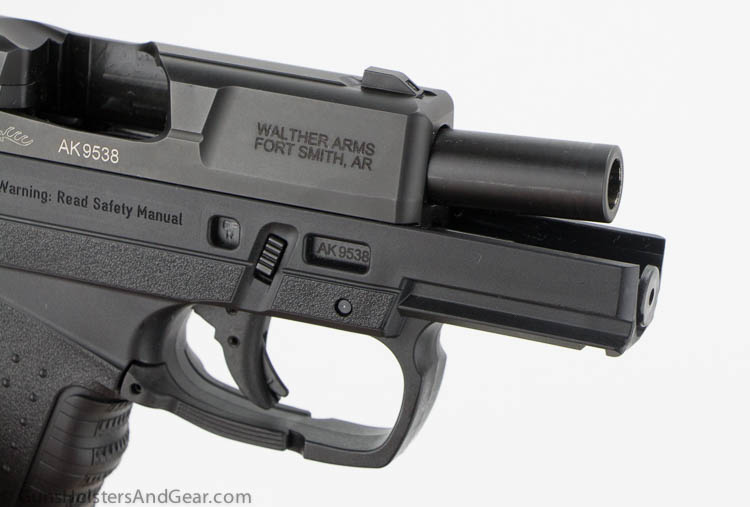
The Walther company traces its roots back to the late 1800’s and has been responsible for the development and/or manufacture of a number of iconic pistols like the PPK and P38. Modern, full-size pistols like the PPQ and PPX are well respected, combat-grade handguns. A legacy of arms making, combined with the fabled German engineering, should result in a brand that American shooters would love.
The PPS is a polymer framed gun that is only 0.9″ wide. It has a very flat appearance with multiple textures on the grip area. The slide has the famous Tenifer treatment to harden the metal.
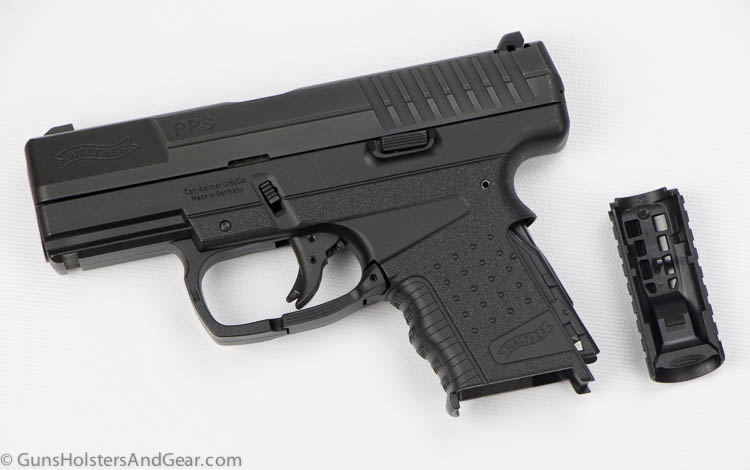
One of the advantages to a polymer frame is the flexibility to change the fit of the gun to the hand. In this case, Walther includes two differently sized backstraps with the pistol.
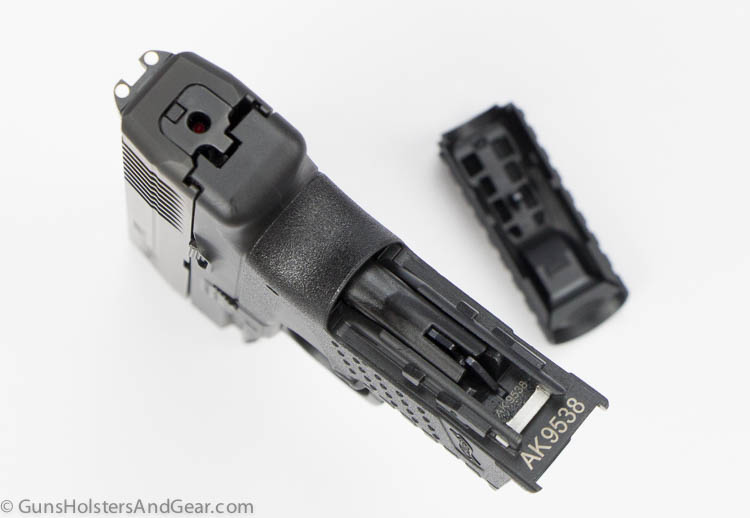
To swap the backstraps, start by simply turning the gun so the slide is closest to the floor and the magazine well is facing upward. You press in on a small tab attached to the backstrap. This releases the backstrap, allowing you to remove it and snap the larger one into place.
For the 9mm pistol, magazines can be had in 6-, 7- and 8-round varieties. My pistol arrived with a 7-round and an 8-round magazine. Both mags had extended baseplates on them that helped fill the hand when inserted.
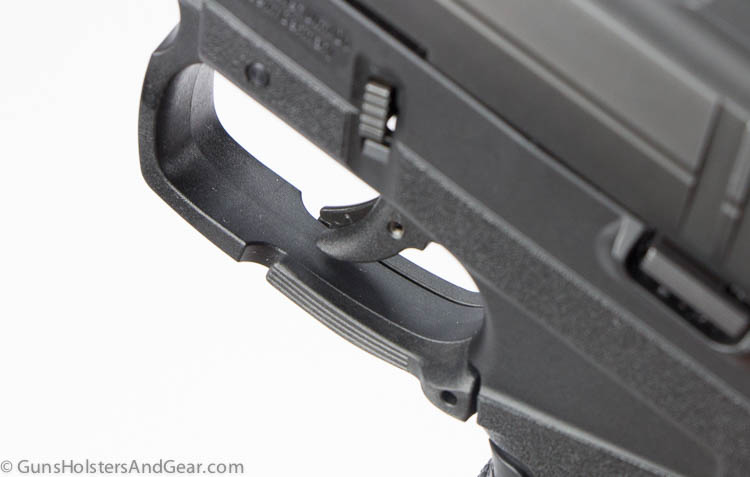
Magazines are released by an ambidextrous lever that runs along the bottom of the trigger guard. This release would end up being the reason why I would not pick the gun for my survival needs. Skip down to the range evaluation section for the full story.
Walther states the trigger pull is 6.1 pounds. Using my Lyman digital trigger pull gauge, I found that the weight was very reliant on finger placement. If I placed the pull gauge at the very bottom of the trigger, then I would get an average of 6 pounds 2 ounces.
However, if I placed the gauge in the center of the trigger face, the pull measured an average of 8 pounds, 4 ounces. Dry firing the gun with a normal grip, it felt like I was getting the larger weight on most pulls. Skip down to the range section for additional information on the trigger pull.
The PPS ships in a hard plastic case and comes with a full color manual.
Lights, Sights and Lasers
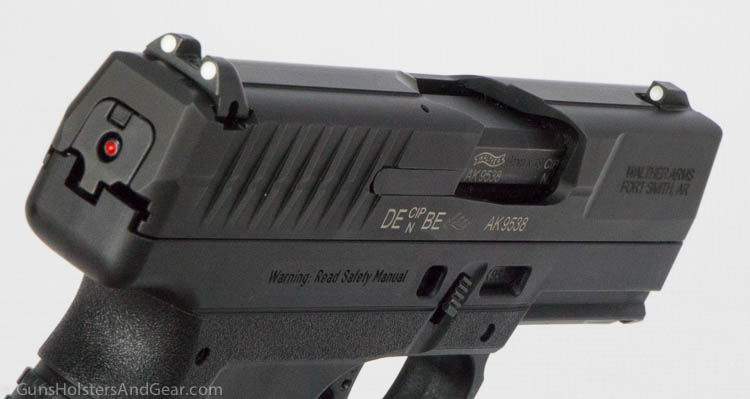
The Walther PPS ships with three white dot sights. Even though this is a compact pistol, the sights are still plenty big enough to use. However, they are replaceable should you so desire. Meprolight, Trijicon and XS Sight Systems all offer upgrades for this gun. Click here to see my roundup article of all of the PPS sight options.
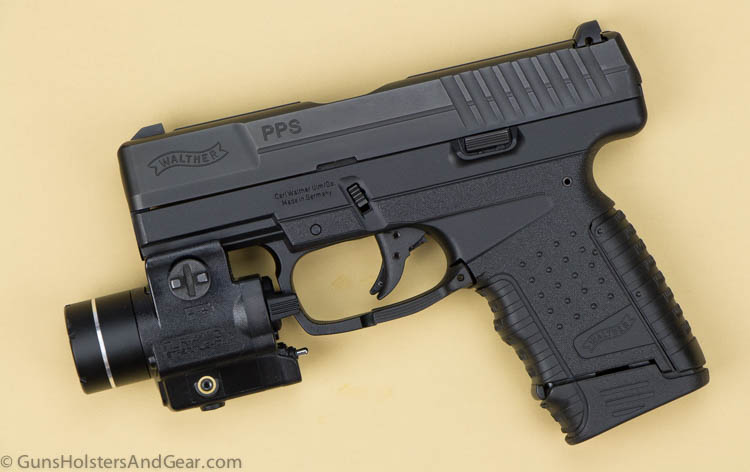
Even though the PPS is very small, Walther did equip it with an accessory rail. This allows you to easily add a white light, laser or combination unit. I tested the PPS with the Streamlight TLR-4 G (shown above.) This combination worked very well, and I encountered no problems.
Specifications
The following specifications are for the 9mm PPS I tested. Walther also makes a PPS chambered for the .40 S&W cartridge. The .40 S&W pistol has the same specs, with the exception of magazine size (5, 6 and 7 rounds.)
| Caliber | 9mm |
| Magazine Capacity | 6 (7 & 8 optional) |
| Barrel Length | 3.2″ |
| Overall Length | 6.3″ |
| Weight (unloaded) | 20.8 oz |
| Action | striker-fired |
| Frame Material | black polymer |
| SKU | 2796333 |
| MSRP | $599 |
Range Time
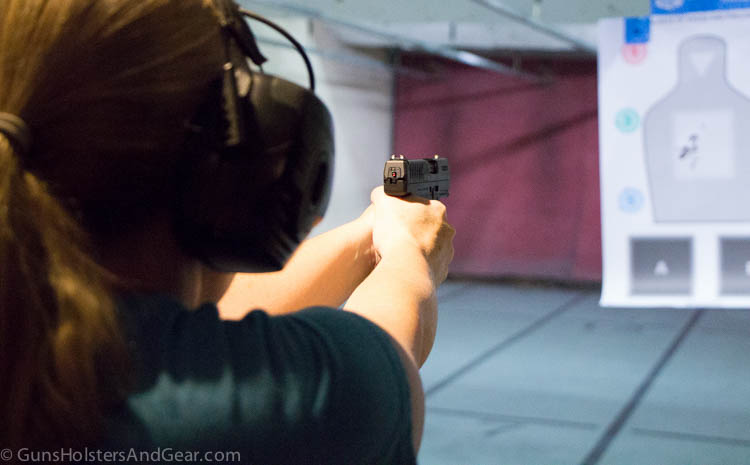
I was eager to shoot the PPS. I’ve shot other modern Walther pistols, and they have all functioned very well. So, I wanted to see if this little gun was a good match to its bigger brothers.
I shot hundreds of rounds through this pistol on multiple range trips. Additionally, two other people shot the gun. Here are a few things I observed.
Trigger Pull
If you read through a few internet gun forums, you will likely see people making the case that Walther makes the best triggers on defensive handguns. While I would not go that far, I have shot a few of their guns and found the triggers to be good.
The PPS did not seem to live up to quite the same quality. There was a significant amount of slack in the trigger, which I don’t mind on a defensive pistol. However, after that is taken up, the trigger has a noticeable amount of stacking about halfway through the remaining trigger pull.
The break is hard, and I could not feel any over-travel. Reset is jerky, nearly requiring a return to the full resting position before it will fire again.
All of this is fairly inconsequential for rapid fire, self-defense work. However, for making a precise aimed shot, the trigger is not ideal.
I should note that the trigger feel would not dissuade me from purchasing the pistol for its intended purpose. However, I believe it should be described so that you can decide for yourself if you want to further investigate this gun for your needs.
Magazine Changes
If there is fault to be found in the PPS, it is with the magazine release. Walther decided to use a lever-type magazine release on this handgun.
I’ve previously reviewed pistols with this general style of magazine release, and I’ve liked all of them that I’ve tried. However, I found the lever on this PPS was difficult to manipulate and significantly slowed down magazine changes when using the thumb of my shooting hand.
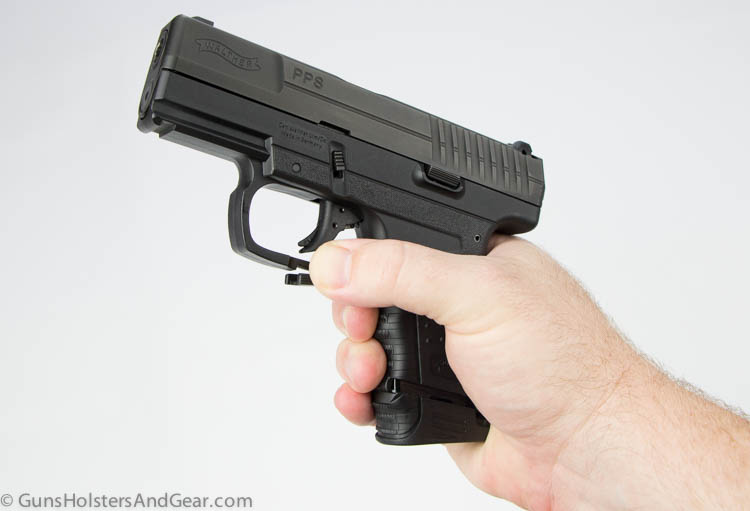
To manipulate the magazine release with my thumb, I had to rotate the gun more than 45Ëš before I could push it down. People with significantly longer thumbs may not have the same problem I encountered.
During one of my range trips, my wife went with me to try a few new guns. She was looking to pick up a new pistol for concealed carry and was comparing the M&P Shield, Glock 43 and PPS. Of the three, she liked how the PPS shot the best. However, she found the magazine release was unnecessarily difficult.
“It’s a deal killer,” she said.
With a little experimentation, I found that I could activate the release with the middle finger of the shooting hand. While I became relatively fast with this technique, it did require that I loosen my grip substantially on the pistol – not something that I think to be ideal in a self-defense encounter.
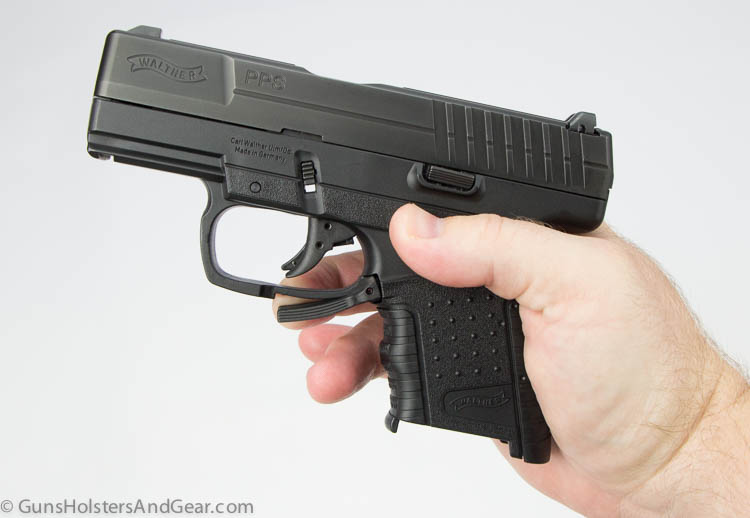
Another problem with using this technique is that it went against all of the training I’ve done in the past 20+ years with handguns. In an emergency, it is very possible that my years of training will kick in and actually impede me from swapping a mag.
Yes – it is unlikely that I will need to change magazines in the unlikely event I find myself in a shooting. However, with all of the options on the market, why would I intentionally select a tool that works against decades of training?
I also found while on the range that the extended magazine baseplates can hang on the meat of the hand during ejection. If manipulating the release lever with my thumb, the heel of the baseplate would consistently stick on my hand, requiring me to reach up with my support hand and pull the mag free.
This is similar to the problem I experienced with both the Shield and Springfield XD-s that use sleeves on their extended magazines. A solution for the Shield now exists, but there is nothing yet for other pistols.
I did not have any problems with the magazines hanging up when using the alternative magazine release method described above. This is largely because my grip on the pistol is severely diminished during this reloading technique.
Ammunition Performance
I’m fortunate enough to have an indoor handgun range that allows me to set up a chronograph and spend many hours on one of their lanes. This allows me to have pretty consistent conditions in which to check for ammunition velocities.
For this review, I ran 13 different loads through the pistol. Blazer Brass FMJ ammo was the most frequently shot round, but I also ran a wide range of hollow point, frangible and other FMJ loads through the pistol. Nine different manufacturers were represented.
| Velocity | Energy | |
| Blazer Brass 115 gr FMJ | 1,093 fps | 305 ft-lbs |
| Federal 9BPLE 115 gr JHP +P+ | 1,172 fps | 351 ft-lbs |
| Federal Champion 115 gr FMJ | 1,093 fps | 305 ft-lbs |
| Hornady Critical Duty 135 gr FlexLock | 950 fps | 270 ft-lbs |
| Hornady Critical Duty 135 gr FlexLock +P | 1,049 fps | 330 ft-lbs |
| HPR Ammunition 115 gr JHP | 1,070 fps | 292 ft-lbs |
| HPR Ammunition 124 gr JHP | 951 fps | 249 ft-lbs |
| Liberty Ammunition 50 gr JHP | 1,934 fps | 415 ft-lbs |
| Perfecta 115 gr FMJ | 1,076 fps | 296 ft-lbs |
| Remington UMC 115 gr JHP | 1,084 fps | 300 ft-lbs |
| Remington UMC Target 115 gr MC | 1,064 fps | 289 ft-lbs |
| Team Never Quit 100 gr frangible | 1,262 fps | 354 ft-lbs |
| Winchester 115 gr JHP (white box) | 1,080 fps | 298 ft-lbs |
All of the ammunition functioned flawlessly in the PPS. I encountered no malfunctions of any kind. The following table shows the recorded average velocity for each load, along with the calculated energy produced.
Recoil and Accuracy
Small handguns tend to produce recoil inversely proportional to their size. In other words, small guns kick more than large ones.
Even so, the PPS was a relatively easy shooting pistol. I found its recoil to be on par with the Shield and Glock 43. It was noticeably easier shooting than the Kahr CM9. My wife felt the PPS was easier to shoot than the G43, and about the same as the Shield.
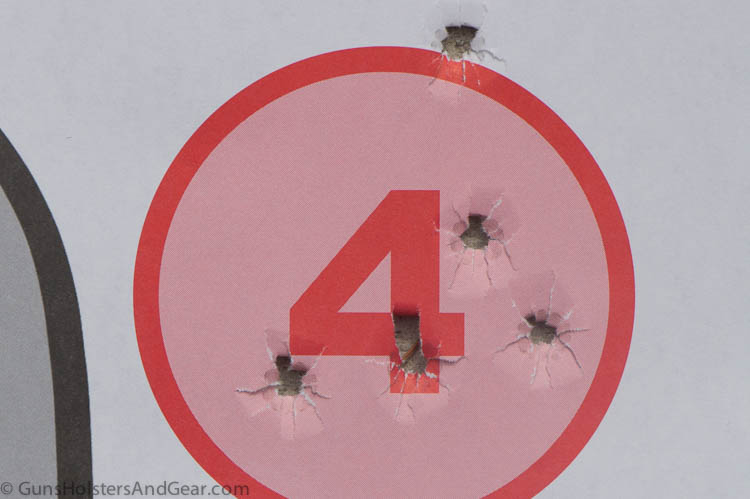
Accuracy measurements are not something I do with defensive handguns on this site. The harsh reality is that guns have a potential accuracy greater than I can produce when shooting. Saying gun x with load y produced a five-shot group of z inches isn’t verifiable or repeatable.
I’m more concerned with the ability to rapidly put rounds on target at typical self-defense distances than I am with how tight I can make a group. With a compact pistol like the PPS, I want to answer two questions:
- Can I rapidly fire the pistol and keep rounds within an 8″ target at 7 yards?
- Can I consistently put slow, deliberate shots in an 8″ target at 25 yards?
For both of these questions, the answer is yes. In fact, I felt my accuracy with this gun – both rapid-fire and distance – was better than with most of the other pistols of this size.
Carry
Walther made the PPS with concealed carry in mind. As a backup gun for a uniformed cop or a primary defensive pistol for the armed citizen, this handgun hides and carries very well.
For me, the gun is a little large for pocket carry. You may have a better experience with it in this mode of carry.
With an inexpensive Uncle Mike’s nylon holster, the pistol hid very well on an ankle. While I was still a police officer, I carried a backup gun on my ankle every shift. The PPS would have served me very well in this role. It is flat enough to hide well, yet still large enough to draw and employ easily.
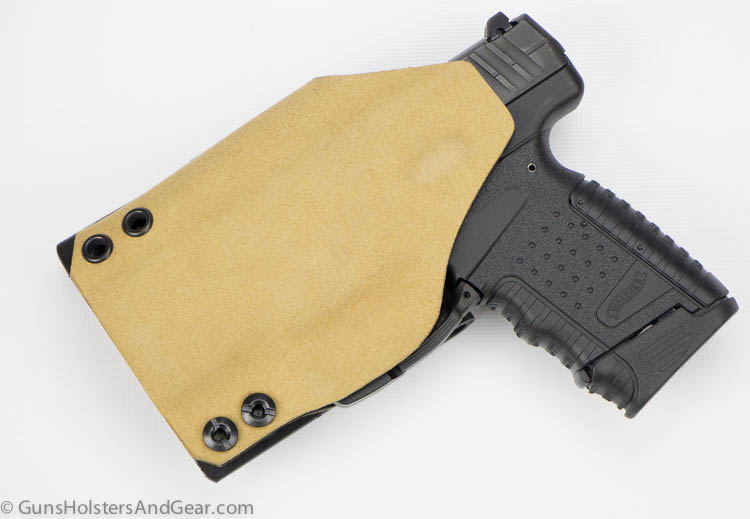
I was very fortunate to have the good folks at Bravo Concealment send me one of their ACER DG2 inside-the-waistband (IWB) rigs to test with this gun. The rig is made of 0.08″ Kydex and works great for an appendix rig. My test holster came finished with a Combat Suede on the exterior that made the holster very comfortable.
I’ve preferred IWB carry for many years, and this style worked very well with the PPS riding in the Bravo Concealment holster. Click here to read my full review of the ACER DG2.
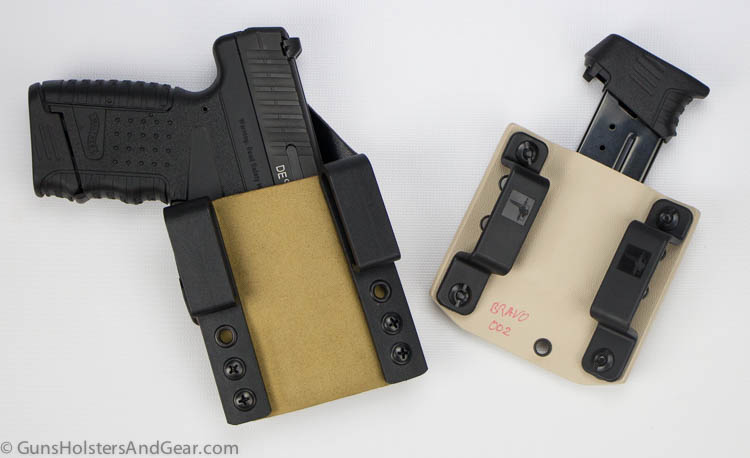
I’ve also put together a page listing many of the Walther PPS holsters that are on the market now.
One thing that I did notice about the PPS could be a potential problem in some uncommon situations. When the trigger is pulled, the striker extends beyond the rear of the slide and is exposed. If the striker encounters a hard surface, the trigger will not pull to the rear and the gun will not fire. Although this is unlikely to happen, it is a potential point of failure in the gun.
Additionally, the pin could encounter foreign matter, such as clothing, and become fouled. Again, I imagine this to be unlikely, but it does cause me some concern.
Final Thoughts
The Walther PPS is a very good gun and one I recommend to anyone needing a compact pistol for self-defense. The PPS is extremely reliable and easy to shoot.
While Walther discontinued the original PPS reviewed here, you can still pick them up through this affiliate link. Also, I recommend checking out my Walther PPS M2 review to see the updated pistol.
For me, the PPS does not make the ideal concealed carry pistol based solely on the magazine release. It simply doesn’t work for me. However, that doesn’t mean it will not work for you. If it does, then this gun should be on your (very) shortlist of guns to try.
Last Update: August 23, 2021
Disclosures
Any time I provide you with a product review, I want you to know what potential biases and conflicts of interest may be in play.
This pistol was provided by Walther as a loan for the specific purpose of review. I wrote a shorter review of the gun for a magazine, and then this, more detailed article after I spent more time with it. Both reviews are original works by me, and the conclusions are the same. Some parts of the article I submitted to the magazine were edited due to space considerations, so I am glad to be able to provide this more thorough look.
Walther is not a sponsor or advertiser, nor am I in any discussions with them to be one. No requests, promises or payments were made by any party to produce a “positive” review.
GunsHolstersAndGear.com is an independent, for-profit website. I do not charge readers a dime to access the information I provide.
Some of the links on this page and site are affiliate links to companies like Amazon and Palmetto State Armory. These links take you to the products mentioned in the article. Should you decide to purchase something from one of those companies, I make a small commission.
The links do not change your purchase price. I do not get to see what any individual purchases.
Please let me know if you have any questions, or if you have any suggestions on what I can do to improve my reviews for you.
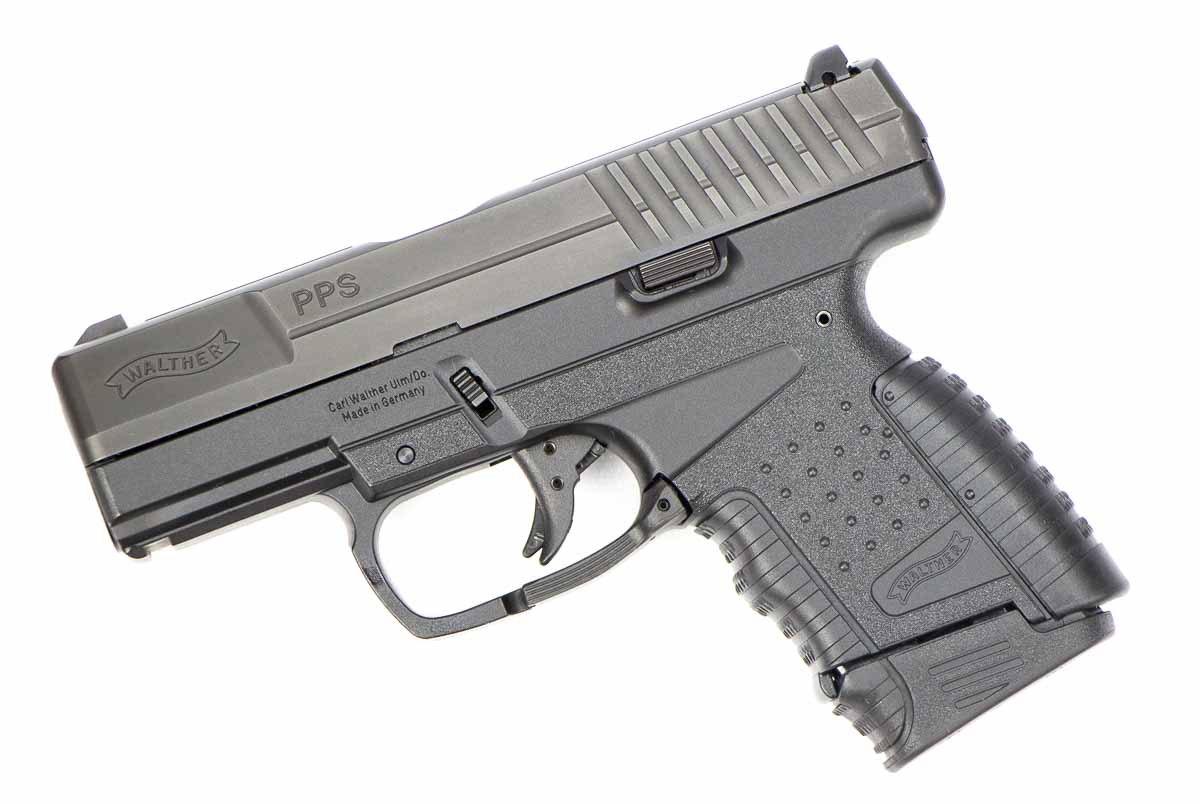
8 replies on “Walther PPS Review”
pps is my edc, works like a charm
I carried the PPS for about two years. I found it to be very accurate despite the trigger peculiarites. It has a rather high bore axis above the shooting hand, but it still recovered quickly in rapid fire. It is a very flat pistol for carry, and the small rail gave me options to add a tactical light for nightstand use.
The magazine release was never a problem for me. Indeed, using the shooting thumb to activiate the paddle release is not efficient. But using the trigger finger is very fast and convenient… as an added bonus it forces the shooter’s finger from where it shouldn’t be during a reload. I’ve been training for 35 years with push-button magazine releases, but really, after a few range trips the paddle release was a non-issue.
I stopped carrying it because of the magazines themselves: the bizzare baseplate arrangement made spare magazines uncomfortableto carry, and awkward to perform a reload with.
Thanks for the feedback on the gun. It is a good shooter and there are plenty of people who like the lever release on this pistol. The lever release on the VP9 worked great for me, but just didn’t on this model. Walther will be coming out with a M2 version of the gun with a push button style release in 2016. I don’t know if it is a replacement, or just an addition to the line.
This isn’t the first time I’ve encountered this particular gripe concerning the PPS’s mag release. The PPS 40 cal. has been my EDC for 8+ years. I have small hands (I wear a men’s small to medium glove) but have never found the Walther mag release to be an issue. The paddle release is FAR more convenient and speedier than a button release as it doesn’t require rotating the pistol or changing my grip in the least.
The gripe seems to be that “I have to rotate my grip to reach the release with my thumb” or “I’m forced to release the mag with my weak hand fingers” or “I can release with my middle finger but it’s awkward” etc. The folks that complain about the release don’t even mention TRYING to operate the release with the shooting finger. Does this obvious and very efficient solution not occur to those who dislike the paddle style release?
Hi Jeremiah,
Thanks for taking the time to read my review and to comment. As you probably read, I did experiment with a variety of ways to run the magazine release. Although I did not specify in the article the method you use, I did try it but it did not work for me.
Regardless, it works great for you, so I hope you are happy with it. For me, I much prefer the updated PPS M2. Kudos to Walther for making a gun that will work for both of us.
Thanks again for reading.
Richard
I find the PPS .40 to be an accurate, ergonomic and reliable pistol. Although some people gripe about the paddle style mag release, I consider this to be a greatly overwrought point. Firstly, it obviates the likelihood of an inadvertent mag ejection. Secondly, as much as people like to ramble about tactical reloads, it’s EXTREMELY unlikely you’ll be forced to do so in an actual gunfight. In that contingency, my personal preference would be to draw my backup gun – rather than attempt a reload, which, as I say, is not likely t9 be required in the first place.
Magazine release is not a problem. It is just a matter of training. I found it relatively
Very easy to manipulate with 2nd and middle fingers . There are 5 other experienced shooters in my group that love the pps as well as I do.
With no disrespect to the individual who wrote this review,
I highly recommend you keep training with this firearm.
Try to remember, many people
Hate change. I believe my advice to you in sound and and accurate!
I have this same pistol in 40sw, after about 300 rounds the back strap came off. Several times. I attached with epoxy and screw and no more problems. This made pulling trigger to open gun to clean. No big deal.